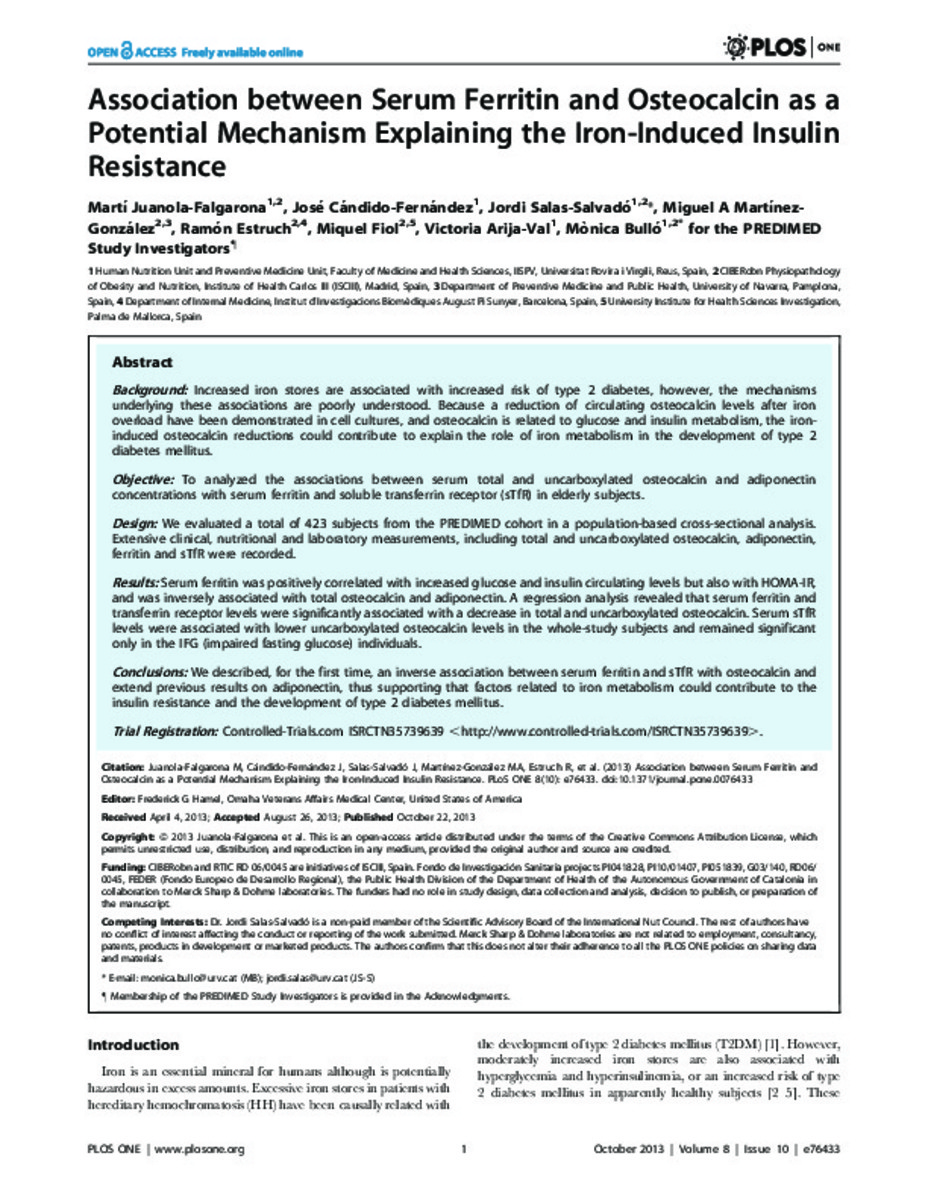Association between serum ferritin and osteocalcin as a potential mechanism explaining the iron-induced insulin resistance
Palabras clave :
Insulin resistance
Serum ferritin
Diabetes mellitus
Fecha de publicación :
2013
Editorial :
Public Library of Science
Cita:
Juanola-Falgarona M, Cándido-Fernández J, Salas-Salvadó J, Martínez-González MA, Estruch R, Fiol M, et al. Association between serum ferritin and osteocalcin as a potential mechanism explaining the iron-induced insulin resistance. PLoS One. 2013 Oct 22;8(10):e76433
Aparece en las colecciones:
Estadísticas e impacto
0 citas en

0 citas en

Los ítems de Dadun están protegidos por copyright, con todos los derechos reservados, a menos que se indique lo contrario.








